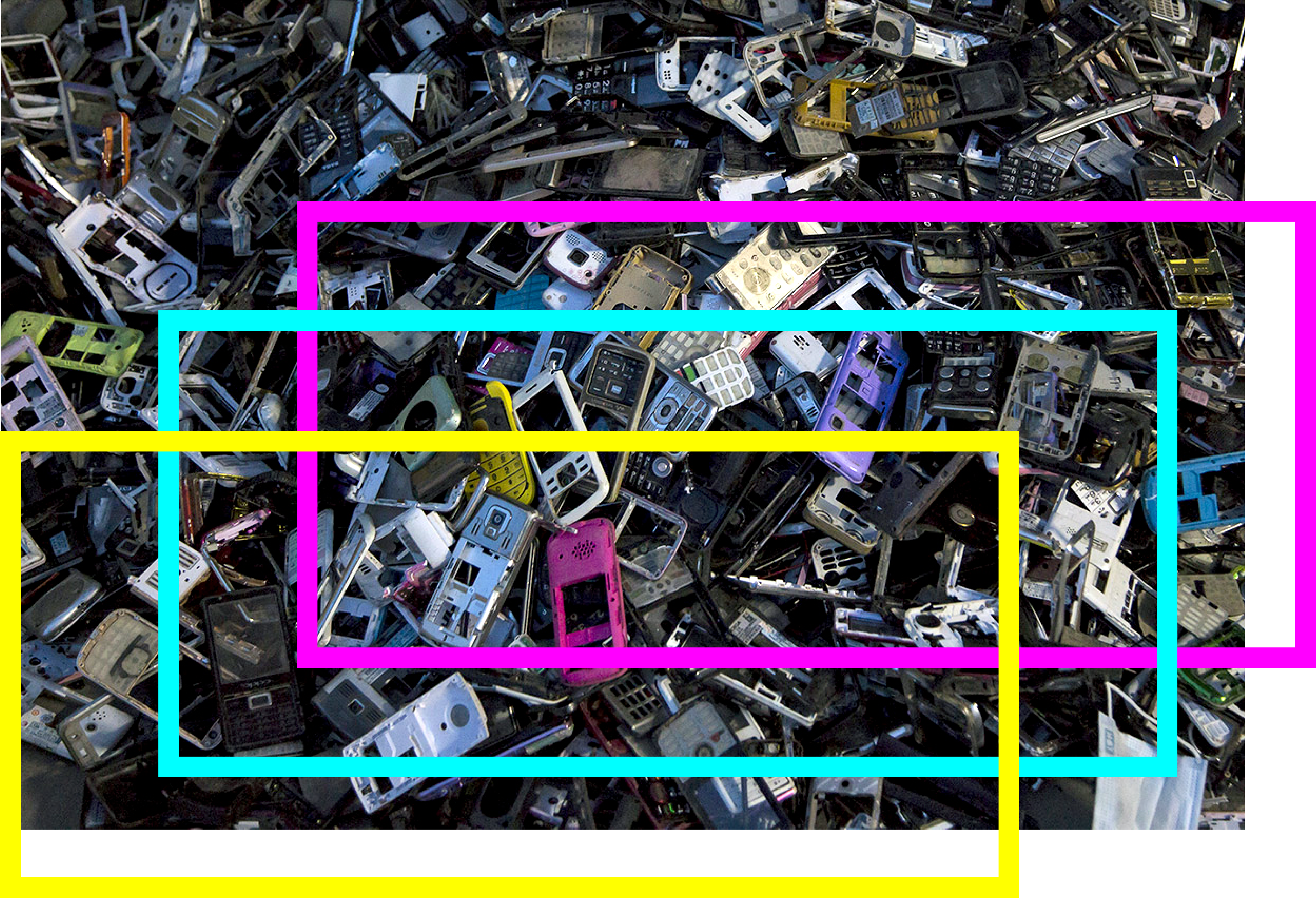E-waste is currently the fastest growing waste stream in the EU and worldwide at the same time two-thirds of Europeans would like to use their digital devices longer as long as their performance is not significantly impaired.
(European Green Deal, 2020)
According to the Global E-waste Monitor a report by the United Nations (2020) a total of 53.6 million tons of e-waste were produced in 2019. That is a considerable increase of 9.2 million tons in only five years. Future development also looks appalling as the Future E-waste Scenarios report (2019) by UN-funded researchers shows. An additional growth to 110 million tonnes of e-waste worldwide is possible by 2050 assuming a scenario where economic improvements in developing countries result in consumption patterns similar to the ones in developed countries as well as limited changes to product development, lifecycles and linear economy.

E-recycling today
Electronic waste is particularly valuable as an important source of secondary raw materials. Precious metals such as gold and silver are incorporated in electronic devices during chipboard production of Smartphones or Computers. While the metal recovery process is constantly improving only around 30% of the remaining electronic waste is adequately recycled in appropriate reprocessing plants. The remaining 70% are exported to developing countries where it is dismantled with unsafe and environmental unfriendly methods. (Orestreams, 2020)
So why are we not able to use the highly developed technology which is built in the electronic devices that are out of use but most of the time still functioning?
Planned obsolescence, the artificially induced premature aging of electronic products is one part of the problem for sure. Modern electronic devices are increasingly designed as low weight and complex functions. This means that the devices use highly integrated hardware technology making repairs and recycling difficult. The products are neither designed nor assembled with recycling principles having been taken into account.
Future Possibilities
We clearly see a trend rising to redesign electronic products empowering the repair-reuse-recycle approach. Several initiatives monitor the development of e-waste and governments create and maintain programs around e-waste recycling but this is only tackling the end of the line. A more sustainable approach is to start by repairing our products instead of buying new ones and start implementing a circular approach right from the beginning, by designing products with a much longer lifecycle. This calls for responsibility on the part of the companies by designing products which are repairable, upgradeable and also have a longer software support as well openness on the part of the users towards this type of product.
Sources:
European Commission, Investing in a Climate-Neutral and Circular Economy, The European Green Deal, European Union, 2020.
Forti V., Baldé C.P., Kuehr R., Bel G. The Global E-waste Monitor 2020: Quantities, flows and the circular economy potential. United Nations University (UNU)/United Nations Institute for Training and Research (UNITAR) – co-hosted SCYCLE Programme, International Telecommunication Union (ITU) & International Solid Waste Association (ISWA), Bonn/Geneva/Rotterdam.
Future E-waste Scenarios; Parajuly, K.; Kuehr, R.; Awasthi, A. K.; Fitzpatrick, C.; Lepawsky, J.; Smith E.; Widmer, R.; Zeng, X. (2019). StEP (Bonn), UNU ViE-SCYCLE (Bonn) & UNEP IETC (Osaka).
Orestreams.com, A study on the current state of e-waste management and investigation into the recycling of electronic waste, developed over the course of three years (2017-2019) and commissioned by NGV Australia and Triennale Milano.
